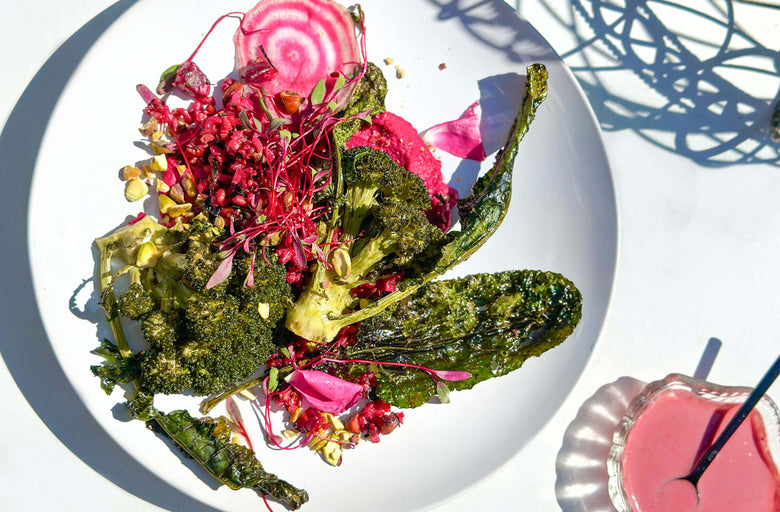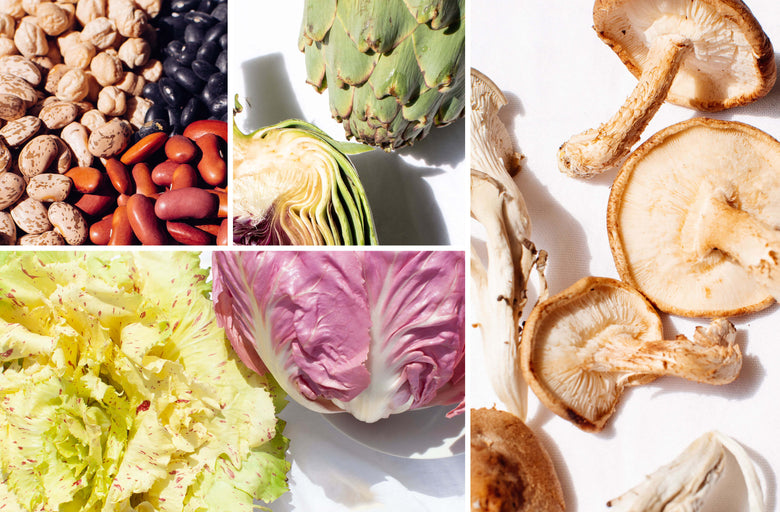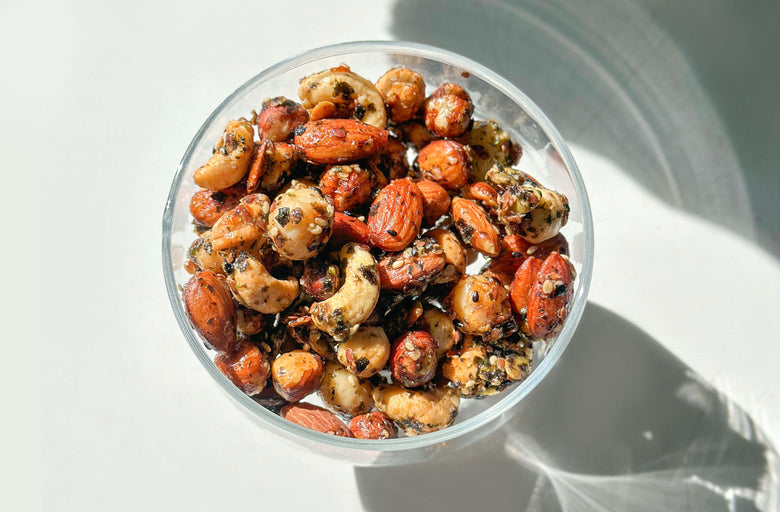You know the feeling when 3 p.m. rolls around and you begin itching for a sweet treat or (more) coffee? A blood sugar crash might be to blame. Riding a daily blood sugar roller coaster—experiencing both extreme bursts of energy and sudden waves of fatigue—can be physically and mentally exhausting. But it doesn’t have to be this way.
Blood sugar is the glucose (ie., body’s preferred fuel) that’s carried in your blood and used for immediate energy, or stored in muscle tissues or the liver for later use. Insulin—a hormone produced by the pancreas—is closely connected to our blood sugar as it shuttles the glucose from your blood into your cells so that said sugar can be metabolized to produce energy, allowing us to do all of the work (and play) we desire. By stabilizing our blood sugar and insulin levels, we can remain energized and fueled all day long.
When we eat refined carbs—which typically have a high glycemic index and no additional nutrients—our blood sugar experiences dramatic spikes and crashes, which are associated with “hanger”, fatigue, and extreme cravings (we’ve all been there). On the other hand, when we’re more metabolically fit—consuming complex, fiber-rich, whole food carbs with each meal for blood sugar stabilization—we remain in equilibrium, and it’s easier for us to bounce back when we do enjoy a flaky croissant every now and again.
Additionally, when processed carbs are stripped of nutrients, especially fiber, the rapid glucose release causes a surge of insulin. If our body experiences an excess of insulin over time, it can become desensitized to its presence, which can lead to a host of inflammatory issues, hormonal imbalance, and chronic disease. To combat this, aim for meals with a 5:1 carb to fiber ratio—the balance built into each Sakara meal—which slowly raises blood sugar, and keeps the kind of spikes and crashes that results from a larger—a.k.a., not-ideal—carb to fiber ratio at bay. (For context: the standard American diet, aptly named SAD, has a carb-to-fiber ratio of 21:1. This diet isn’t blood sugar-friendly, abundant in refined grains, simple sugars, and other inflammatory ingredients.) To help keep blood sugar levels balanced, skip the sweet and starchy foods and instead reach for whole grains and plant protein.
Eating to Support Healthy Blood Sugar Levels
You have the tools to eat in a way that supports your blood sugar, minimizes cravings, and primes your body to handle treats when they come your way.
- Get enough of the “F” word. Fiber, that is. The difference between refined carbohydrates and their whole, in-the-raw counterparts is that the latter offers an abundance of fiber. Upping your plant fiber intake will secure the glucose necessary for full-body function as well as the soluble fiber that will regulate your blood sugar. The fiber also slows down the digestion process, which improves glucose metabolism, leaving you satiated longer and avoiding “empty” snacking altogether.
- Seek mineral support. Along with fiber, getting adequate minerals can help balance blood sugar and reduce afternoon energy slumps. Sugar cravings as a result of imbalanced blood sugar can point to deficiencies in zinc, magnesium, chromium, and calcium. While a diverse, plant-rich diet should have those bases covered, fill in the remaining gaps with a superfood multi like the one found in The Foundation supplement pack and a daily dose of 72 ionic minerals, found in our Beauty Water Drops.
- Assemble your before-and-after-meal toolkit. Consider introducing digestive enzymes as part of your morning rituals or between mealtimes to help keep blood sugar levels balanced. Seek out types like the blood-sugar stabilizer cellulase and chitosanase, which break down the cell wall of sugar-loving Candida. These enzymes help prevent yeast overgrowth, support immunity, and can redirect bacteria to change cravings, ultimately re-training your palate for the better. After you eat, opt for a brewed cup of peppermint or red rooibos tea; peppermint has been researched to mitigate symptoms of hypoglycemia, while red rooibos can inhibit the formation and growth of fat cells, which is where glucose is stored if not used for energy.
- Stabilize your metabolism. Chronically mismanaged blood sugar can often result in insulin resistance which can lead to Type 2 Diabetes and other autoimmune or metabolic syndromes. Support your body’s ability to metabolize blood sugar with Ayurvedic herbs like gymnema sylvestre. Its Hindi name, gurmar, translates to “sugar destroyer” as its superpower lies in reducing sugar absorption in the GI tract and improving insulin sensitivity. This reduces the overall amount of glucose available in the bloodstream.
- Physically expel stress. Your adrenal glands are responsible for releasing cortisol and adrenaline, hormones that help us take action in the moment, but can leave the body fatigued and stressed long-term. As cortisol increases, so does your heart rate and blood sugar levels. You can mitigate frequent—and unwarranted—cortisol spikes with an ongoing stress-management practice. Whether it be “exercise snacks,” pranayama breathwork, or any kind of moving meditation, reducing the frequency your body employs the stress response, the less your blood sugar will dip and peak.
- Remember joy is a nutrient. We have long held the belief that no food is truly off-limits—be it an almond croissant, a plate of french fries, or a heavy pour of red wine with a friend. That said, it’s important to learn how to decipher when it’s something you want versus something your hijacked hormones are signaling for. No diet or amount of calorie counting will ever teach you that. Say “yes” to carbs in their natural, free-flowing state through diverse, organic plants—and observe how your cravings change. Then, if you want to eat something you know will heighten your blood sugar, you’ll have equipped your body with intelligence (through nutrition, intuition, and self-trust) to re-center. Remember, the journey to build your best body should be delicious, abundant, and sustainable.






